A rectangular block of mass m and area of cross-section A floats in a liquid of density ρ. If it is given a small vertical displacement from equilibrium, it undergoes oscillation with a time period T. Then
T∝1√m
T∝√ρ
T∝1√A
T∝1ρ
The correct Answer is:C
To solve the problem regarding the time period of oscillation of a rectangular block floating in a liquid, we can follow these steps:
1. Understanding the System:
- We have a rectangular block of mass m and area of cross-section A floating in a liquid of density ρ.
- When the block is displaced vertically by a small distance x from its equilibrium position, it will experience a restoring force due to buoyancy.
2. Buoyancy Force:
- The buoyant force acting on the block when it is submerged is given by Archimedes' principle:
FB=ρgV
where V is the volume of the liquid displaced. For a rectangular block, if it is displaced by x, the volume displaced is A⋅x. Thus, the buoyant force becomes:
FB=ρg(A⋅x)
3. Restoring Force:
- The restoring force FR acting on the block when it is displaced is equal to the buoyant force:
FR=−ρgAx
- The negative sign indicates that the force acts in the opposite direction of the displacement.
4. Equation of Motion:
- According to Hooke's law for simple harmonic motion (SHM), the restoring force can also be expressed as:
FR=−mω2x
- Setting the two expressions for restoring force equal gives:
−mω2x=−ρgAx
- We can cancel x (assuming x≠0):
mω2=ρgA
5. Finding Angular Frequency:
- Rearranging the equation gives:
ω2=ρgAm
6. Time Period of Oscillation:
- The time period T of oscillation is related to the angular frequency ω by the formula:
T=2πω
- Substituting for ω:
T=2π√mρgA
Final Result:
The time period T of the oscillation of the block is given by:
T=2π√mρgA
- We have a rectangular block of mass m and area of cross-section A floating in a liquid of density ρ.
- When the block is displaced vertically by a small distance x from its equilibrium position, it will experience a restoring force due to buoyancy.
- The buoyant force acting on the block when it is submerged is given by Archimedes' principle:
FB=ρgV
where V is the volume of the liquid displaced. For a rectangular block, if it is displaced by x, the volume displaced is A⋅x. Thus, the buoyant force becomes:
FB=ρg(A⋅x)
- The restoring force FR acting on the block when it is displaced is equal to the buoyant force:
FR=−ρgAx
- The negative sign indicates that the force acts in the opposite direction of the displacement.
- According to Hooke's law for simple harmonic motion (SHM), the restoring force can also be expressed as:
FR=−mω2x
- Setting the two expressions for restoring force equal gives:
−mω2x=−ρgAx
- We can cancel x (assuming x≠0):
mω2=ρgA
- Rearranging the equation gives:
ω2=ρgAm
- The time period T of oscillation is related to the angular frequency ω by the formula:
T=2πω
- Substituting for ω:
T=2π√mρgA
The time period T of the oscillation of the block is given by:
T=2π√mρgA
Topper's Solved these Questions
- OSCILLATIONS BOOK - NCERT FINGERTPS ENGLISHCHAPTER - OSCILLATIONS EXERCISE - Higher Order Thinking Skills
8 Videos
- OSCILLATIONS BOOK - NCERT FINGERTPS ENGLISHCHAPTER - OSCILLATIONS EXERCISE - Exemplar Problems
9 Videos
- MOTION IN A STRAIGHT LINEBOOK - NCERT FINGERTPS ENGLISHCHAPTER - MOTION IN A STRAIGHT LINEEXERCISE - NCERT Exemplar
6 Videos
- PHYSICAL WORLDBOOK - NCERT FINGERTPS ENGLISHCHAPTER - PHYSICAL WORLDEXERCISE - Assertion And Reason
10 Videos
Similar Questions
A block of rectangular size of mass m and area of cross section A, float in a liquid of density ρ.If we give a small vertical displacement from equilibrium, It undergoes SHM with time period T, then
View SolutionA plank of mass 'm' and area of cross - section A is floating as shown in figure. When slightly displaced from mean position, plank starts oscillations. Find time period of these oscillations.
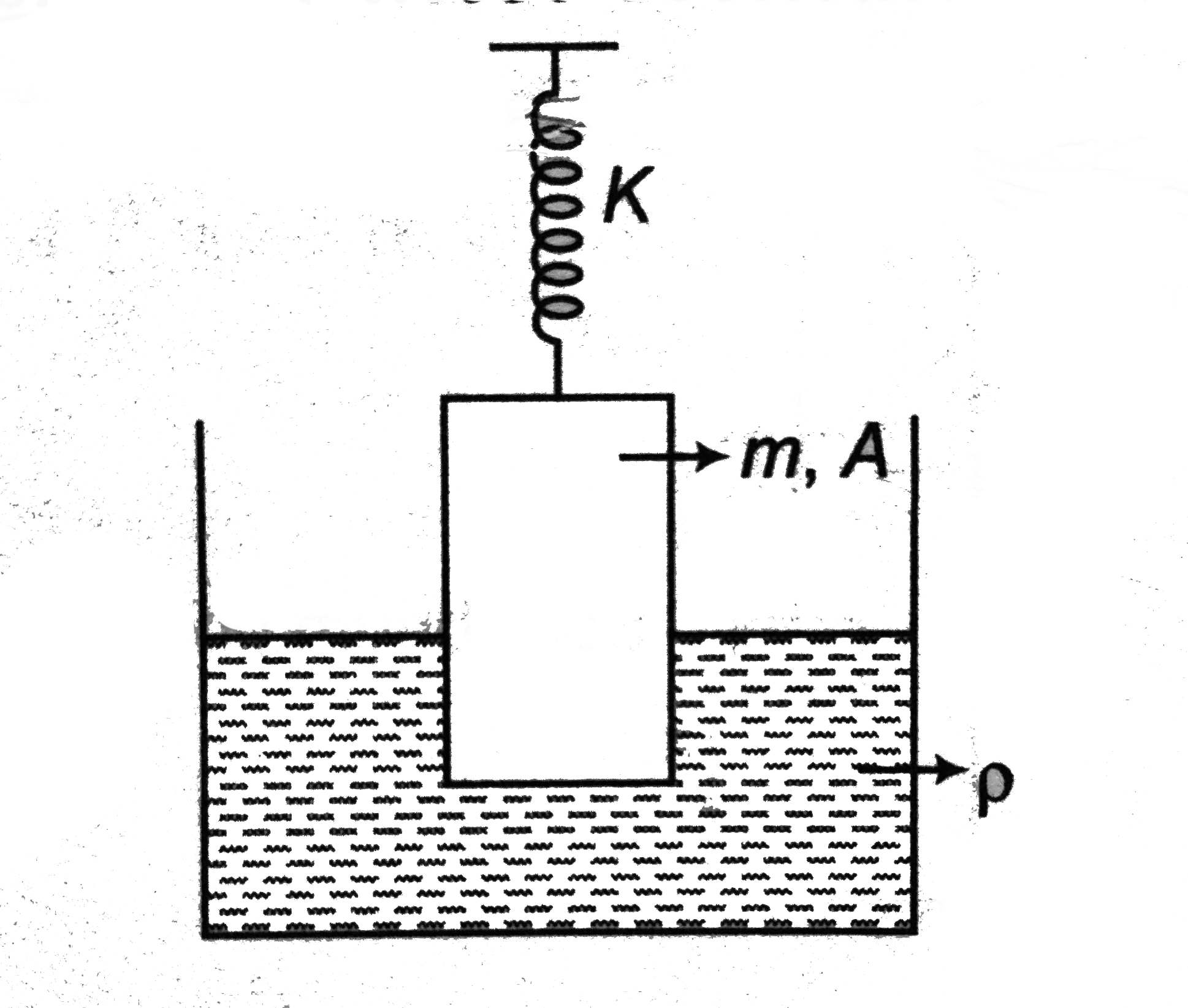
View SolutionA plank of mass 'm' and area of cross - section A is floating in a non - viscous liquid of desity ρ. When displaced slightly from the mean position, it starts oscillating. Prove that oscillations are simple harmonic and find its time period.
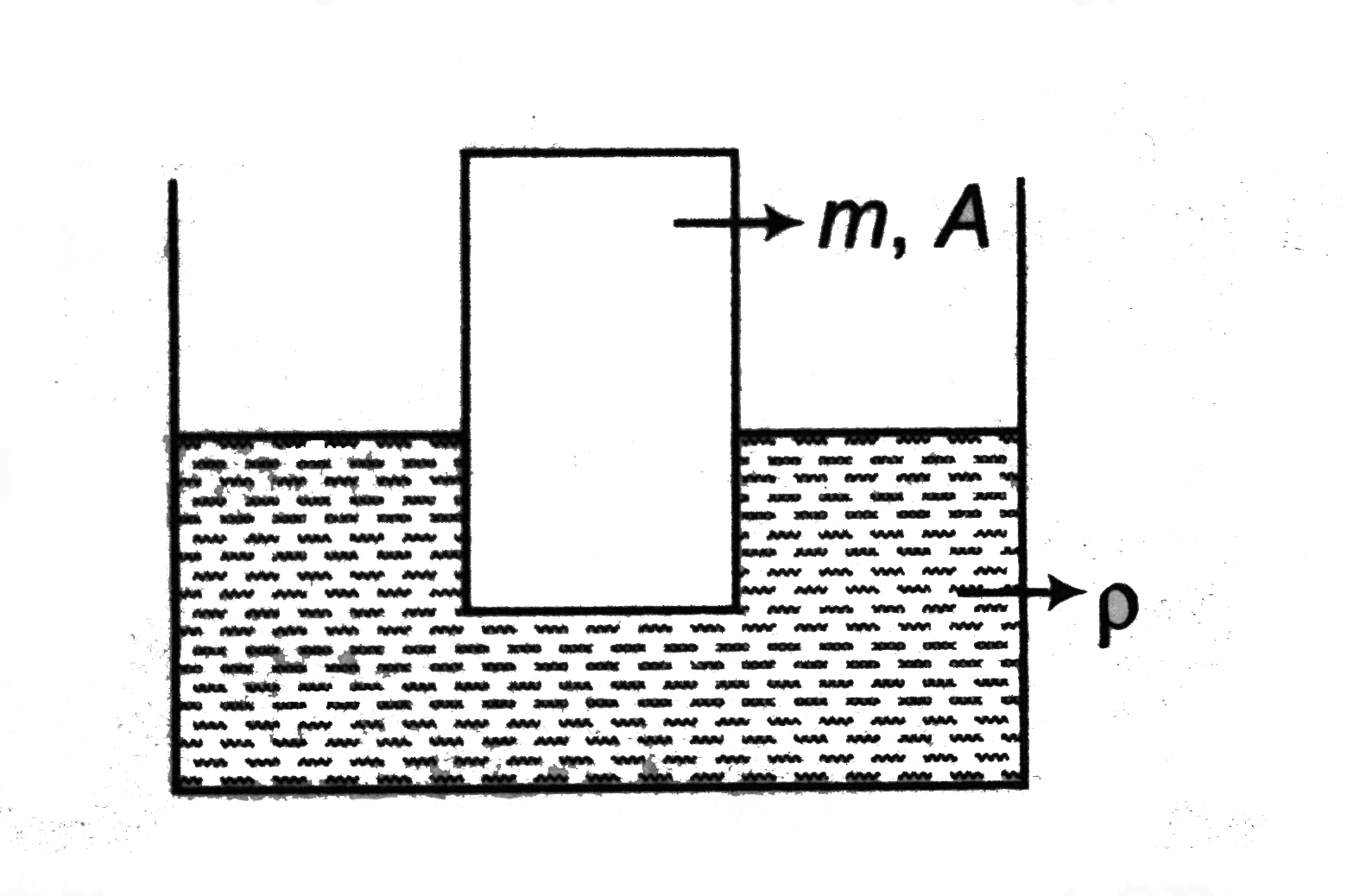
View SolutionA cylindrical block of wood of mass m and area cross-section A is floating in water (density = ρ) when its axis vertical. When pressed a little and the released the block starts oscillating. The period oscillations is
View SolutionA body of uniform cross-sectional area floats in a liquid of density thrice its value. The portion of exposed height will be :
View SolutionA small ring of mass m1 is connected by a string of length l to a small heavy bob of mass m2. The ring os free to move (slide) along a fixed smooth horizontal wire. The bob is given a small displacement from its equilibrium position at right angles to string. Find period of small oscillations.
_E01_106_Q01.png)
View Solution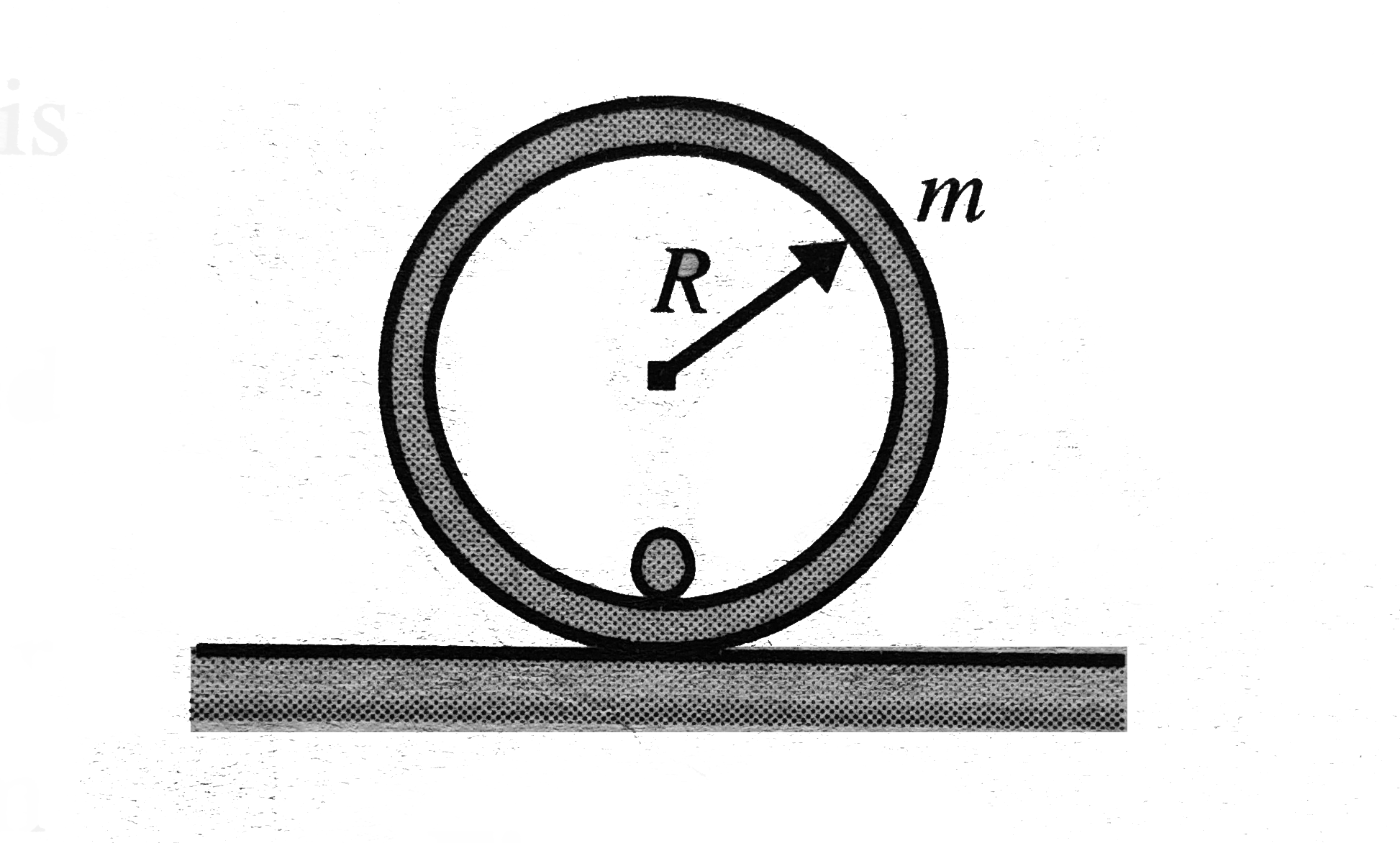
A thin-walled tube of mass m and radius R has a rod of mass m and vry small cross section soldered on its inner surface. The side-view of the arrangement is as shown in the following figure. The entire arrangement is placed on a rough horizontal surface. The system is given a small angular displacement from its equilibrium position, as a result, the system performs oscillations. The time period of resulting oscillations if the tube rolls without slipping is
View SolutionPassage XIV) A uniform cylindrical block of mass 2M and cross-sectional area A remains partially submerged in a non viscous liquid of density ρ, density of the material of the cylinder is 3ρ. The cylinder is connected to lower end of the tank by means of a light spring of spring constant K. The other end of the cylinder is connected to anotehr block of mass M by means of a light inextensible sting as shown in the figure. The pulleys shown are massless and frictionless and assume that the cross-section of the cylinder is very small in comparison to that of the tank. Under equilibrium conditions, half of the cylinder is submerged. [given that cylinder always remains partially immersed)
Under equilibrium conditions
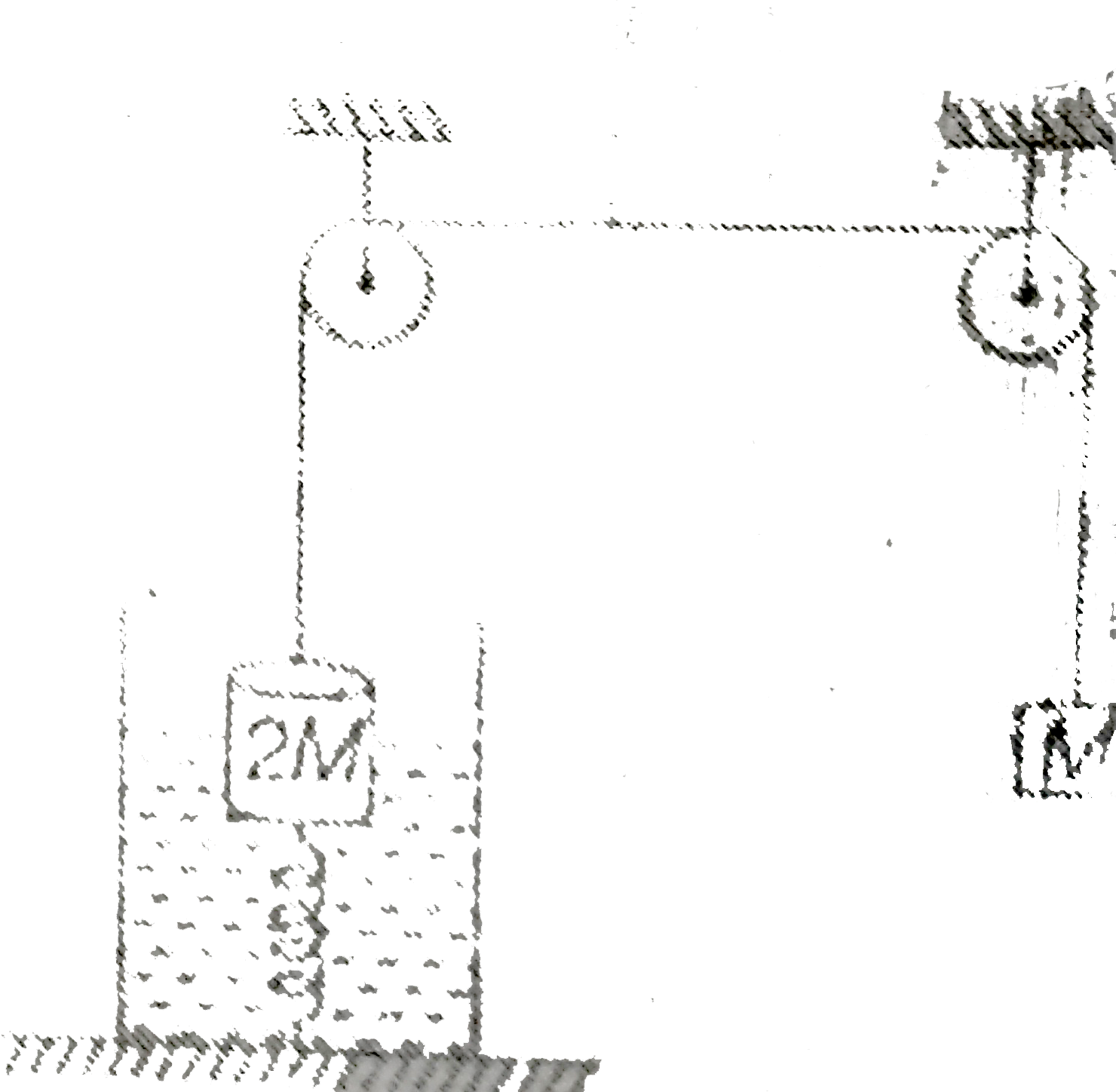
View SolutionPassage XIV) A uniform cylindrical block of mass 2M and cross-sectional area A remains partially submerged in a non viscous liquid of density ρ, density of the material of the cylinder is 3ρ. The cylinder is connected to lower end of the tank by means of a light spring of spring constant K. The other end of the cylinder is connected to anotehr block of mass M by means of a light inextensible sting as shown in the figure. The pulleys shown are massless and frictionless and assume that the cross-section of the cylinder is very small in comparison to that of the tank. Under equilibrium conditions, half of the cylinder is submerged. [given that cylinder always remains partially immersed)
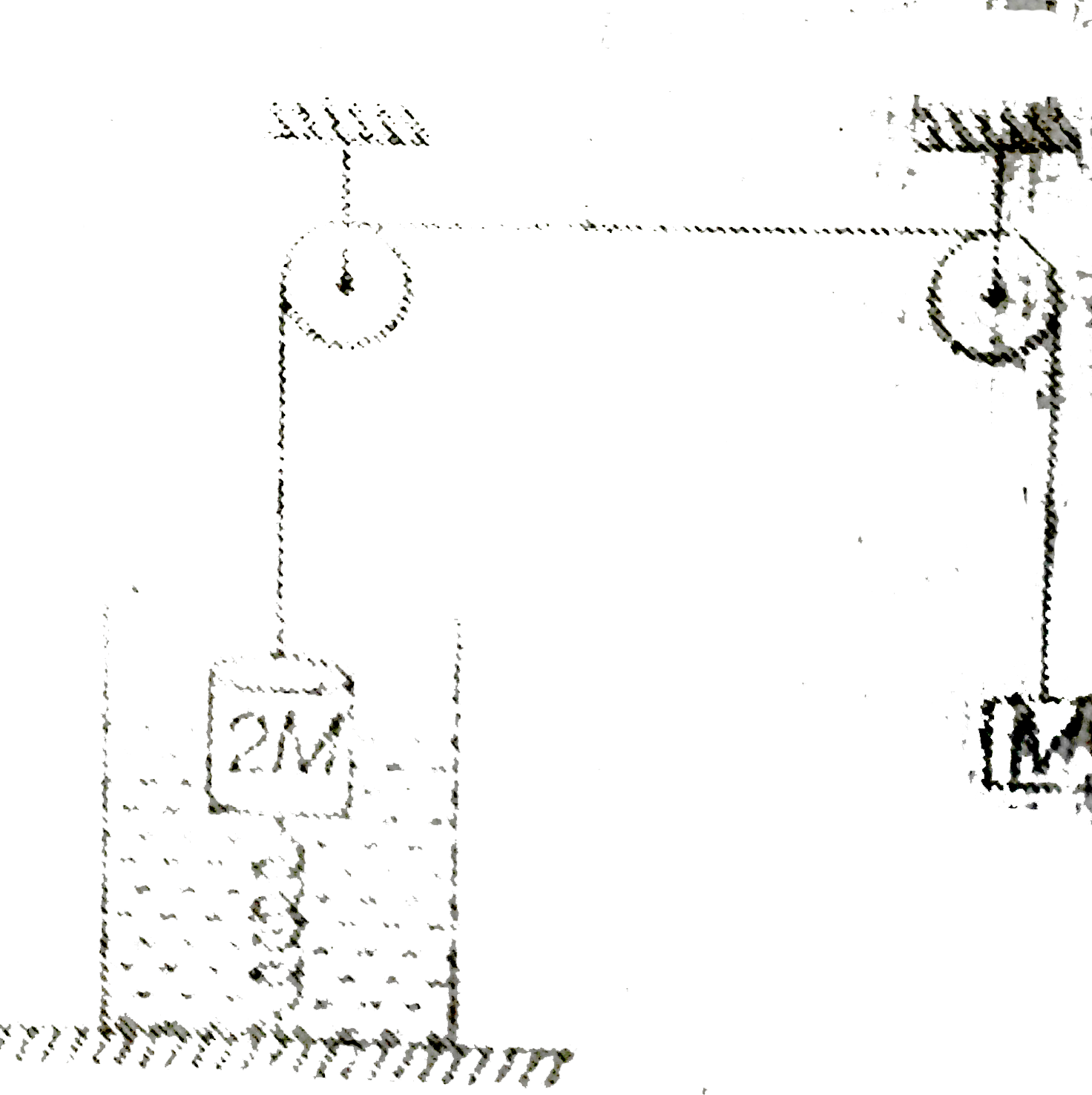
By what maximum distance cylinder will be pushed downward into the liquid from equilibrium position so that when it is set free then tension in the string will not vanish [Assume at equilibrium position system was at rest]
View SolutionA vertical pole of length l , density ρ , area of cross section A floats in two immiscible liquids of densities ρ1and ρ2. In equuilibrium possition the bottom end is at the interface of the liquids. When the cylinder is displaced vertically, find the time period of oscillation.
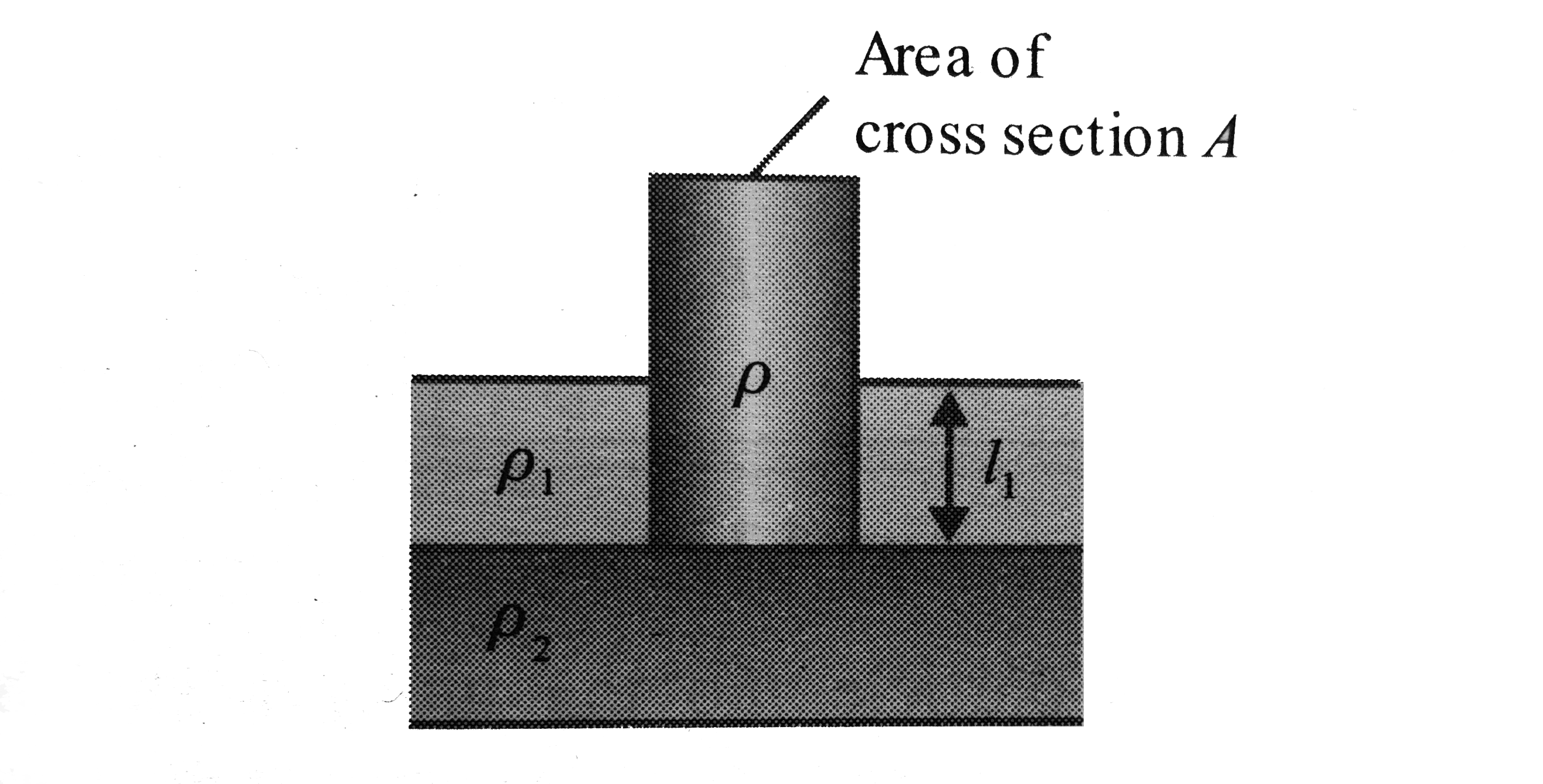
View Solution
